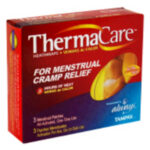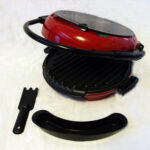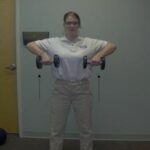After spending a combined eight hours over a two day period assembling a gas grill single-handedly it was no surprise that my elbows were screaming from the tendinitis I have lived with for years. Normally, I use ThermaCare, but as both elbows required relief, I decided to compare products. I have tried a similar IcyHot product and was dissatisfied. This time I decided to try the IcyHot Medicated Sleeve and compare it to the tried-and-true ThermaCare. I used the IcyHot on my right elbow as that was where the pain was worse, the ThermaCare on my left as a control. I already knew how well it works. If IcyHot could take care of the pain in my right elbow, I just might have to rethink my pain-reliever of choice. At the time of this experiment, the pain level in my left elbow was about a five, the pain level in my right elbow was about a 7.5. I could not extend either arm fully.
IcyHot® is a product of Chattem, Inc., the active ingredient being menthol. When you open the package, the medication is on the outside of the sleeve. Once placed on the appendage (it can be used on arms and legs), it is then rolled on itself so the medication is against the skin. Chattem provides pictures for ease of understanding. This in and of itself is a big improvement over the medication patch I used before. I thought that even though the medication is on the outside, there is a lot of area on the sleeve not containing the medication, so there would be no mess. I was mistaken. I got the menthol medication on my hands which then required washing. I reeked of menthol, and the medication seeped through the sleeve. If the sleeve is worn under clothing, the menthol might stain the garment.
ThermaCare® is a product of Proctor & Gamble. The product contains pellets that are made up of charcoal, table salt, iron, and water. The pellets become active and produce heat when they come in contact with air.
Thirty minutes after applying both products, I found both worked as advertised. IcyHot® started off cold, though the warmth seemed no different than when BENGAY® is applied; it can even be said that the heat is less intense than with BENGAY®. I still smelled like menthol, and my dog left my side because the smell was so strong. ThermaCare® took approximately 30 minutes to heat up as expected.
An hour later, both products had reduced my discomfort. Movement of both elbow joints was good, though the IcyHot® was noticeably less bulky, which allowed for easier range of motion, and could be worn under a garment without notice. However, the smell would be a definite sign it was being worn. The lack of heat intensity seemed to be a good thing. A stronger concentration over a long period of time might cause burns as the amount applied cannot be controlled. Still I could not extend either arm fully.
Five hours later the heat level for both products was about the same. The ThermaCare® arm was less comfortable than the IcyHot® arm probably because of the differences in design. Remember, the IcyHot® is much less bulky than the ThermaCare. At that time, I could extend my left arm (ThermaCare®) fully. I could extend my right arm no more than I could when I first applied the IcyHot®.
To see if it was the IcyHot or if I was just having a bad bout of tendinitis, I applied a new ThermaCare wrap the next day for five hours. The result was the same. I still could not extend my arm fully. It was apparent that it was not because of the IcyHot product.
As for price, IcyHot was the better deal, a box of three went for $7.99 ($2.66 each), ThermaCare was $7.39 for a box of two ($3.70 each).
Since both products worked equally well, in the end the choice is up to the consumer: Pay less and live with the smell or pay more with no smell. If the maker of IcyHot comes up with a product with no smell I would be inclined to switch. The difference in price makes up for the need to wash my hands after applying the product and even the possibility of staining a garment, but not the menthol smell.





